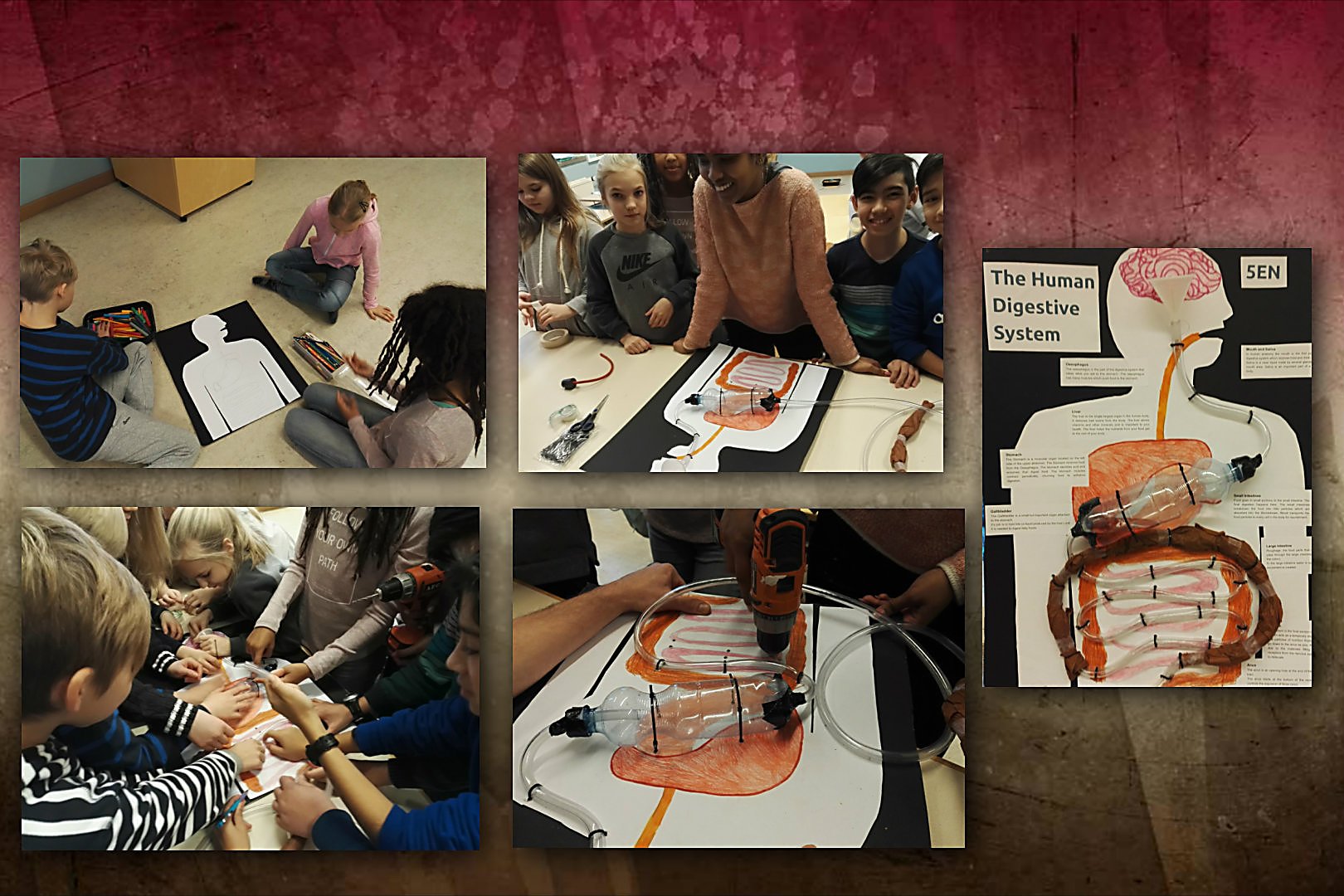Materials Required:
Empty plastic bottle (for the stomach)
Funnel (for adding liquids)
Plastic tubing (to connect the organs)
Cardboard sheet
Construction paper (for the large intestine)
Scissors
Glue or tape
Markers or colored pencils
Water (for simulation)
Optional: Food coloring (to represent different digestive juices)
Steps Involved:
Draw the Digestive System:
On a large piece of cardboard, draw the outline of the digestive system including the mouth, esophagus, stomach (represented by the plastic bottle), small intestine, and large intestine.
Create the Large Intestine:
Cut out a section of construction paper to represent the large intestine. Paste or glue this construction paper directly onto the cardboard where the large intestine will be located. This will be a static part of the model.
Prepare the Stomach:
Use an empty plastic bottle to represent the stomach. Cut a small hole in the bottle’s cap to attach the plastic tubing. Label the bottle “Stomach” using markers.
Assemble the Tube Connections:
Attach one end of the plastic tubing to the hole in the bottle cap. This tubing will represent the esophagus and connect the bottle to the small intestine on the cardboard.
Create the Small Intestine:
Draw and cut out a section on the cardboard to represent the small intestine. Attach this section to the cardboard and connect it to the tubing coming from the stomach.
Build the Digestive System Model:
Connect the plastic tubing from the stomach to the drawn small intestine on the cardboard. Ensure the tubing aligns with the drawn path of the digestive system.
Add a Funnel for Simulation:
Place a funnel into the open end of the plastic tubing leading to the stomach. This will be used to simulate adding food or liquid into the stomach.
Simulate Digestion:
Pour water (or colored water) into the funnel to simulate food entering the digestive system. Observe how the liquid travels through the tubing and into the large intestine.
Discuss and Review:
Review each part of the digestive system with the students, explaining how the liquid moves through the model and how each organ functions in the digestion process.
Experiment and Explore:
Allow students to experiment with the model by pouring different liquids or adjusting the tubing to see how the flow changes. Discuss how this model represents real digestive processes.

